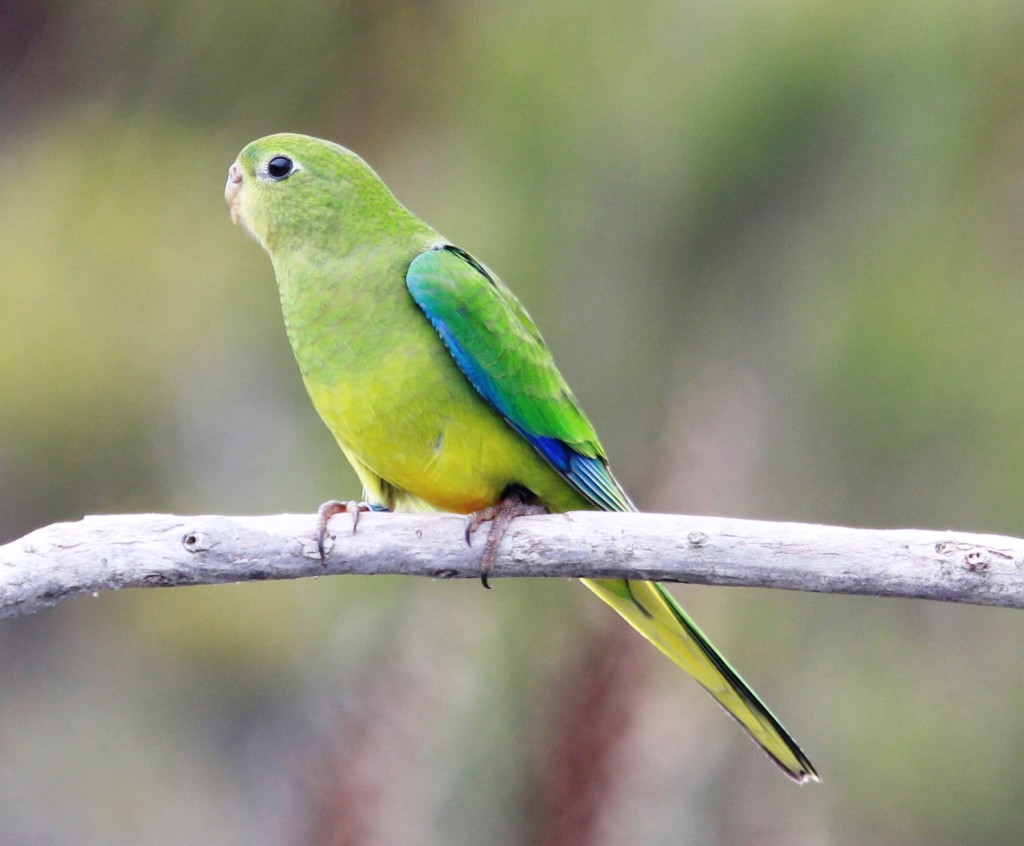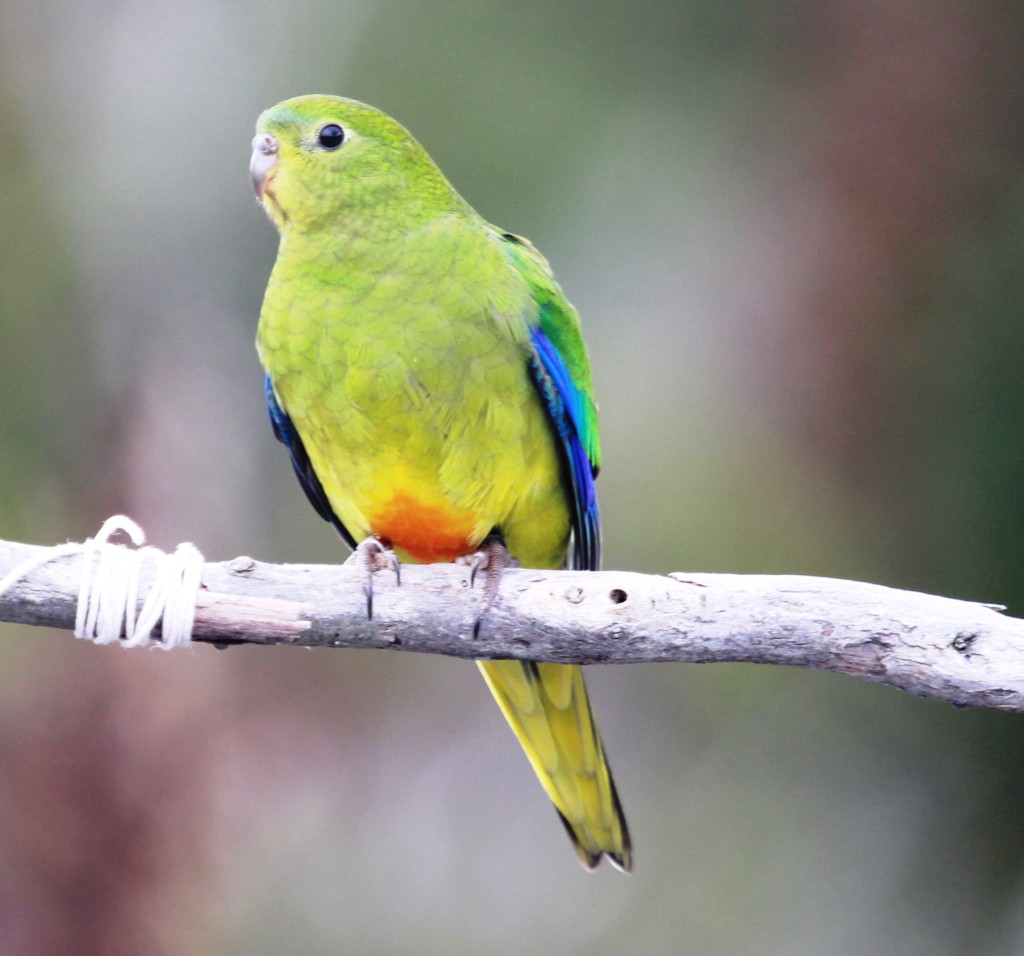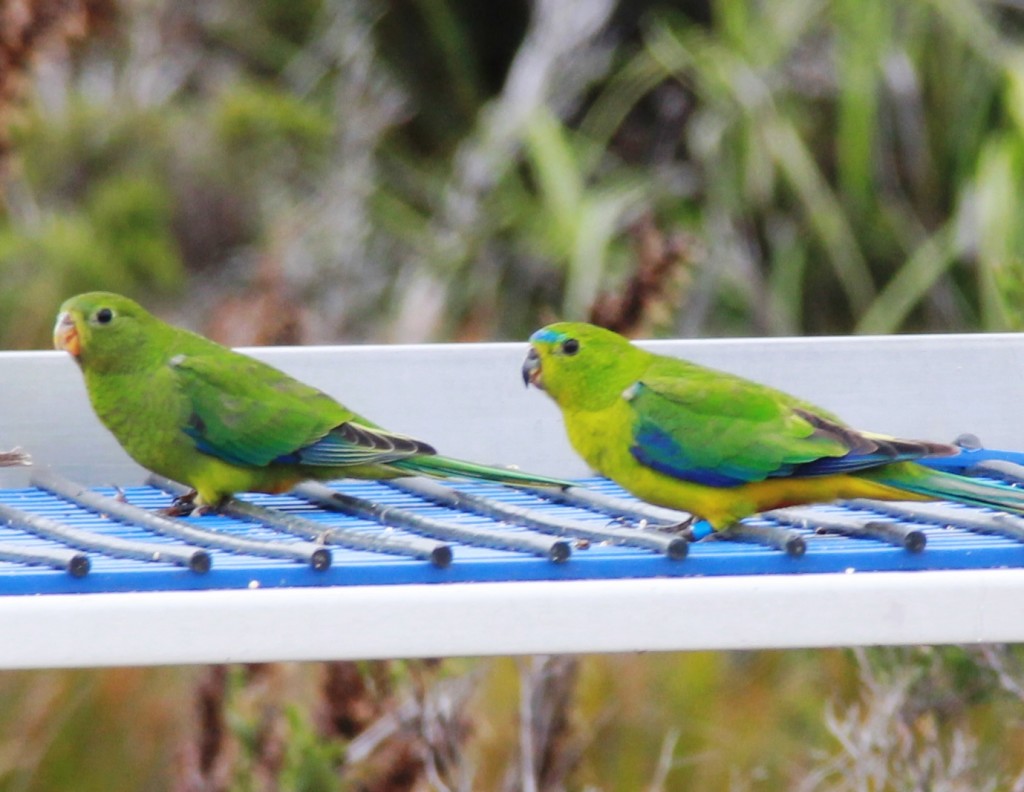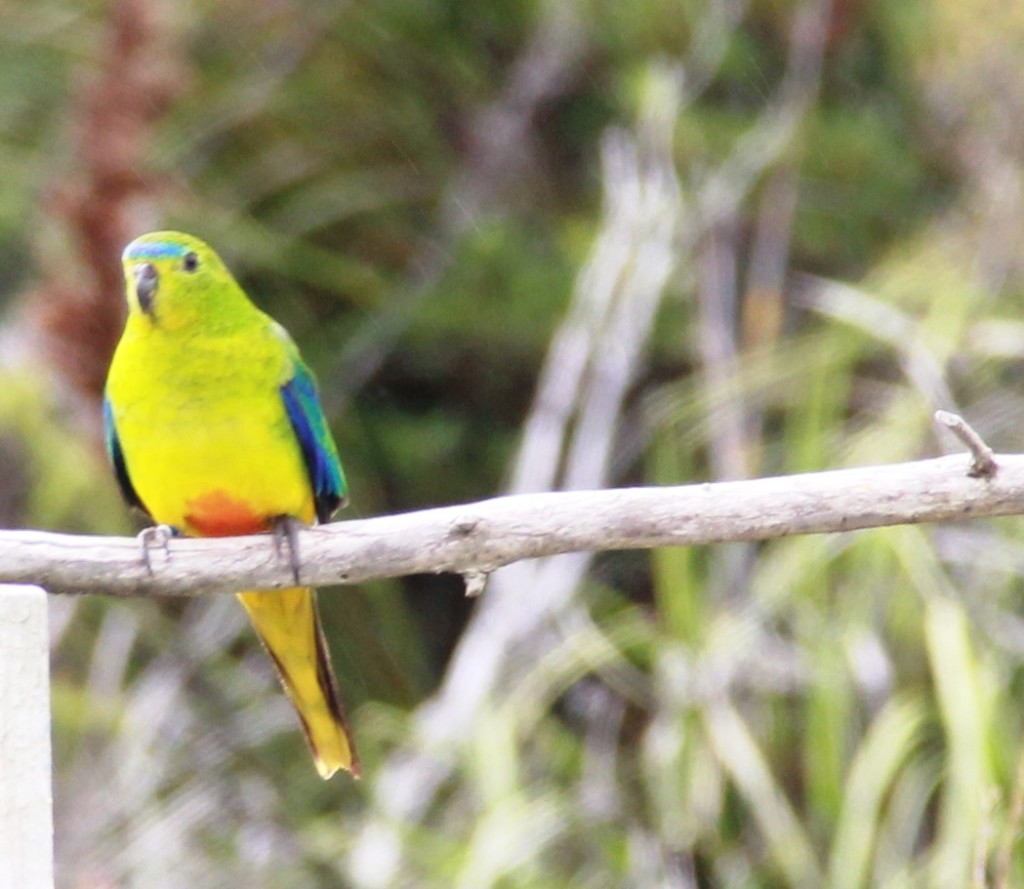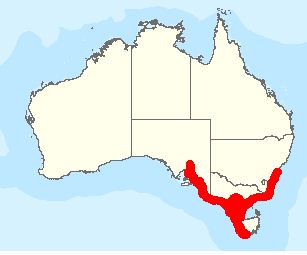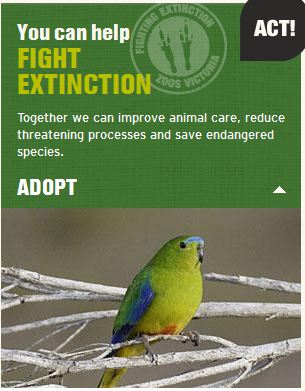Orange-bellied Parrots (Neophema chrysogaster) are one of the rarest parrots species in the world; and unless something is done, we risk losing them from the planet forever.
I took the photos below on my trip to see them at Melaleuca, Tasmania in March 2014.
According to this video report, there are only 20 at the traditional breeding grounds at Melalueca, Tasmania. They are one of only two species of parrot which migrate. OBPs breed in Tasmania and spend the winter in coastal grasslands on southern mainland Australia. With only 36 wild birds known to be alive after the summer 2011/12 breeding season, it is regarded as a critically endangered species. This map shows their range.
There is extensive information on the species on the Australian Biodiversity site, but I do want to point out the major threats.
The main current threat to the Orange-bellied Parrot is the loss and fragmentation of its non-breeding saltmarsh habitat. Suitable habitat has been lost to the construction of farmland, industrial sites and saltworks (Ashby 1924b; Brown & Wilson 1982; Loyn et al. 1986; Menkhorst et al. 1990; Starks 1995b; Stephenson 1991; Yugovic 1984). The main factors contributing to the loss of Orange-bellied Parrot habitat are:
- drainage of wetlands for grazing
- alteration and destruction of saltmarsh for industrial and urban development
- grazing of native vegetation
- vegetation clearance for agricultural purposes
- changes to land use practices
- recreational activities (OBPRT 2006a).
Potential threats to the Orange-bellied Parrot population include loss of unknown breeding sites, competition from introduced species, predation, Psittacine Circoviral Disease (PCD), collision with structures, ingestion of toxic weeds and reduced availability of food due to the changed species composition at feeding sites (OBPRT 2006a).
Threat Abatement and Recovery
The current Recovery Plan includes the following objectives:
- To monitor the population size, productivity, survival and life history of the Orange-bellied Parrot.
- To identify all sites used by Orange-bellied Parrots and better understand migration.
- To increase the carrying capacity of habitat by actively managing sites throughout the species’ range.
- To identify, measure and ameliorate threats, particularly in migratory and winter habitats.
- To increase the number of breeding sub-populations /groups.
- To maintain a viable captive population.
How can you help?
Zoos Australia have a captive breeding program and you can help by virtually “adopting” an Orange-bellied Parrot.
Visit their website to learn more about this.
Orange-bellied Parrots are also represented on Facebook and I recommend you like these pages to keep up to date with what is happening with them.
Orange-bellied Parrot Project
Save the Orange-bellied Parrot
In spite of their rarity, it is still possible to see Orange-bellied Parrots in the wild at Melaleuca, Tasmania. In this post I show you how to get there on airline miles and organize a visit. They can also be seen in coastal Victoria while they spend the winter there but they are more spread out and more difficult to spot. I recommend making the trip to Tasmania to see them between January-early March when there are both adults and newly hatched babies around.
LEARN MORE ABOUT ORANGE-BELLIED PARROTS
VIDEO
Polytelis Media has a superb clip from their excellent series on Australian parrots on Youtube.

